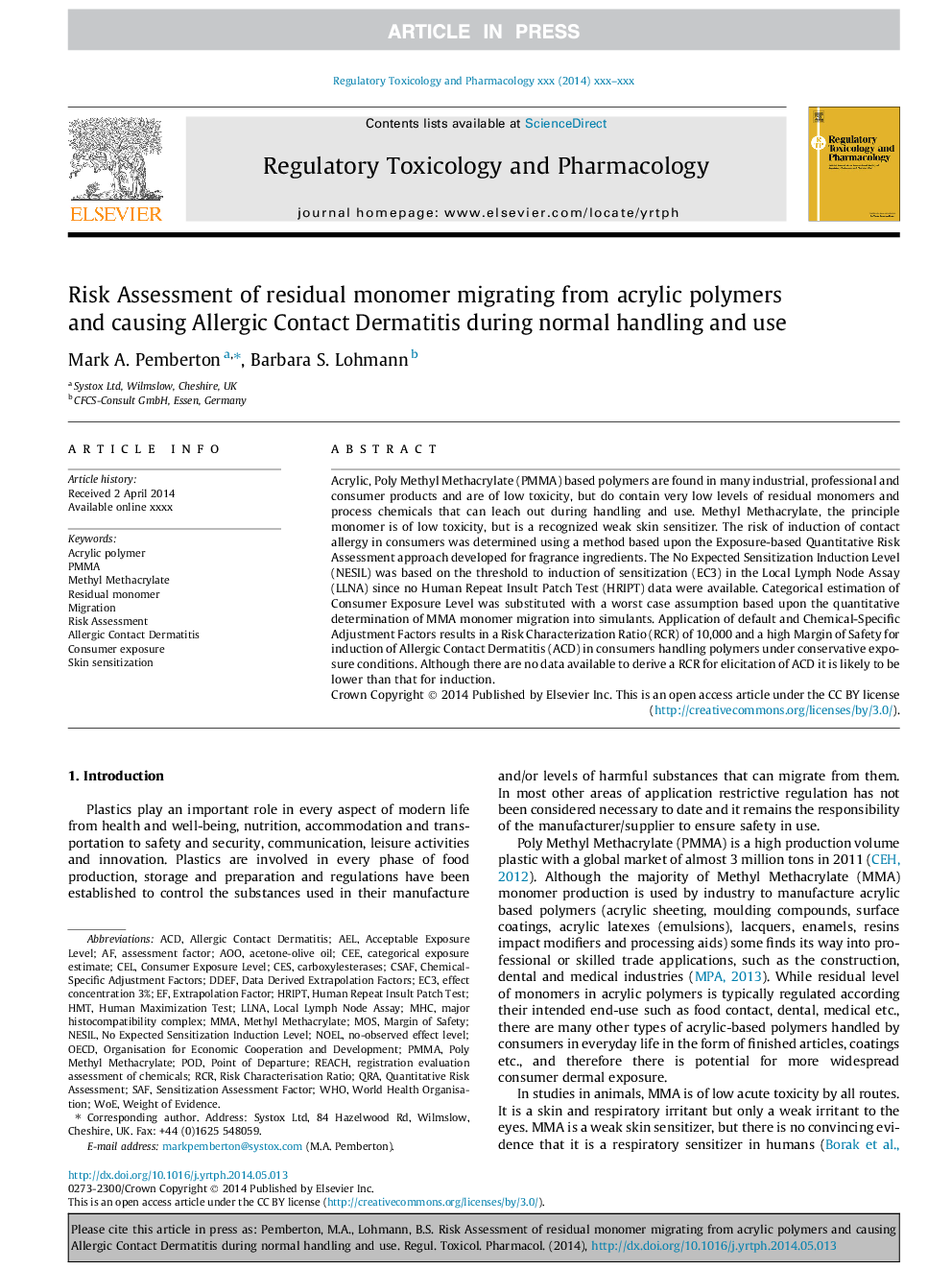| Article ID | Journal | Published Year | Pages | File Type |
|---|---|---|---|---|
| 5857059 | Regulatory Toxicology and Pharmacology | 2014 | 9 Pages |
Abstract
Acrylic, Poly Methyl Methacrylate (PMMA) based polymers are found in many industrial, professional and consumer products and are of low toxicity, but do contain very low levels of residual monomers and process chemicals that can leach out during handling and use. Methyl Methacrylate, the principle monomer is of low toxicity, but is a recognized weak skin sensitizer. The risk of induction of contact allergy in consumers was determined using a method based upon the Exposure-based Quantitative Risk Assessment approach developed for fragrance ingredients. The No Expected Sensitization Induction Level (NESIL) was based on the threshold to induction of sensitization (EC3) in the Local Lymph Node Assay (LLNA) since no Human Repeat Insult Patch Test (HRIPT) data were available. Categorical estimation of Consumer Exposure Level was substituted with a worst case assumption based upon the quantitative determination of MMA monomer migration into simulants. Application of default and Chemical-Specific Adjustment Factors results in a Risk Characterization Ratio (RCR) of 10,000 and a high Margin of Safety for induction of Allergic Contact Dermatitis (ACD) in consumers handling polymers under conservative exposure conditions. Although there are no data available to derive a RCR for elicitation of ACD it is likely to be lower than that for induction.
Keywords
WOEeC3ACDMOSCelSAFLLNANOELQRAAOOhMTHRIPTAELExtrapolation factorCEECSAFno expected sensitization induction levelAcceptable Exposure LevelHuman Maximization TestRCRMMACarboxylesterasesPODRisk Characterisation RatioOECDLocal lymph node assayRisk assessmentQuantitative risk assessmentCEShuman repeat insult patch testMargin of safetySkin sensitizationACD, Allergic contact dermatitisREACHWorld Health OrganisationOrganisation for Economic Cooperation and DevelopmentAssessment factorConsumer exposureMMA, Methyl methacrylateMHCmajor histocompatibility complexMigrationresidual monomerNESILPoint of departureWeight of evidencePMMAPoly methyl methacrylateAcrylic polymerWHO
Related Topics
Life Sciences
Environmental Science
Health, Toxicology and Mutagenesis
Authors
Mark A. Pemberton, Barbara S. Lohmann,
